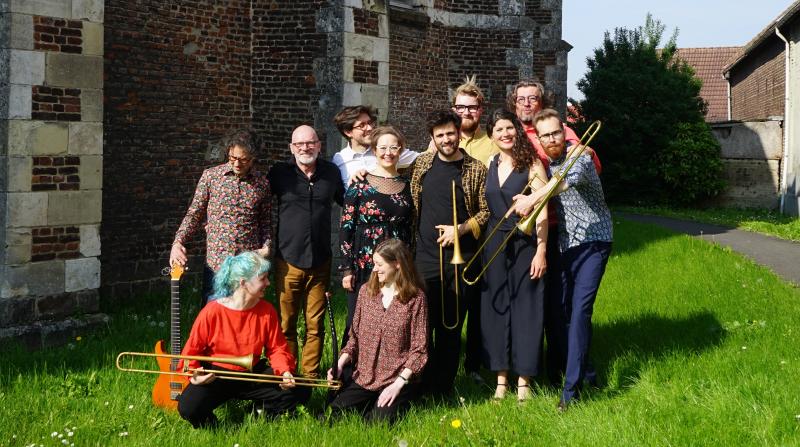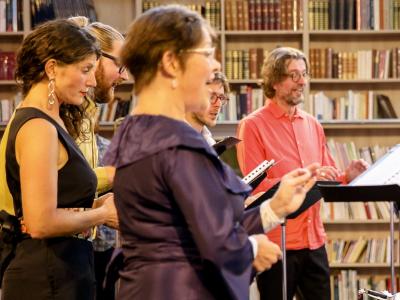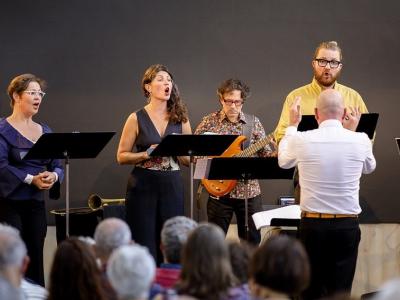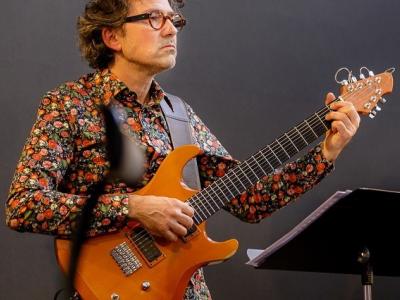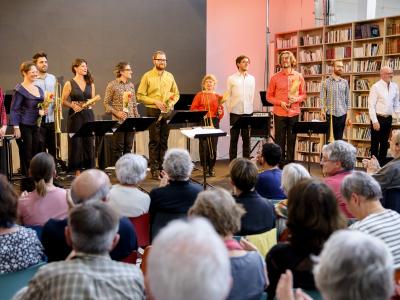ANOTHER SPRING
David Chevallier
5 musicians | 1 cornetto, 3 sackbuts and guitar
Joël Suhubiette | Conductor
David Chevallier knows the Ensemble Jacques Moderne well. He has attended many concerts and has always appreciated Joël Suhubiette’s work. It is therefore a natural evolution for him to be invited to compose and arrange for our ensemble. Joël Suhubiette's interest in contemporary music is well known. Over the past 25 years, he has commissioned around 40 contemporary compositions, for which he has conducted the world premieres, both in France and abroad.
It is thus unsurprising that he wished to take the Ensemble Jacques Moderne towards new horizons by proposing an encounter between repertoire and contemporary music. David Chevallier rapidly emerged as the ideal composer for this project, for his work connecting early music and creation.
For this new musical journey, David Chevallier and Joël Suhubiette have chosen Le Printemps by Claude Lejeune as an anchor. Indeed, this work is vast, rich in musical invention and poetry. Already "modern" in the 16th century, it is suitable for a new interpretation today. It is not by coincidence that Olivier Messiaen admired this work for its very modern rhythmic modes. Similarly, it is not surprising that it immediately interested David Chevallier, as it offered obvious points of convergence with his own language.
For this creation, 5 voices will be associated with 5 instruments: a cornetto, 3 sackbuts and a theorbo, alternating with a "modern" guitar. This instrumentation guarantees the possibility of preserving a "historical" sound when desired, while moving away from it a piacere.
David Chevallier's re-creative process could be compared to a genetic modification: first isolating the aspects that characterize the pieces he works on, he then modifies the structures, amplifies the effects, annotates, superimposes, responds, distorts.
However, the essence for him is never to weaken the initial composition, nor to betray its author, but to reach a point of equilibrium. It's a skillful balance, which leads to a new entity, bringing together the "genes" of the original composer (here Claude Lejeune) and his own personal material.
press REVIEW
"Encounters, sometimes surprising, always delightful, of repertoires from diverse horizons, intersecting on the edge of a fountain of Youth, beyond centuries and borders."
La Nouvelle République

